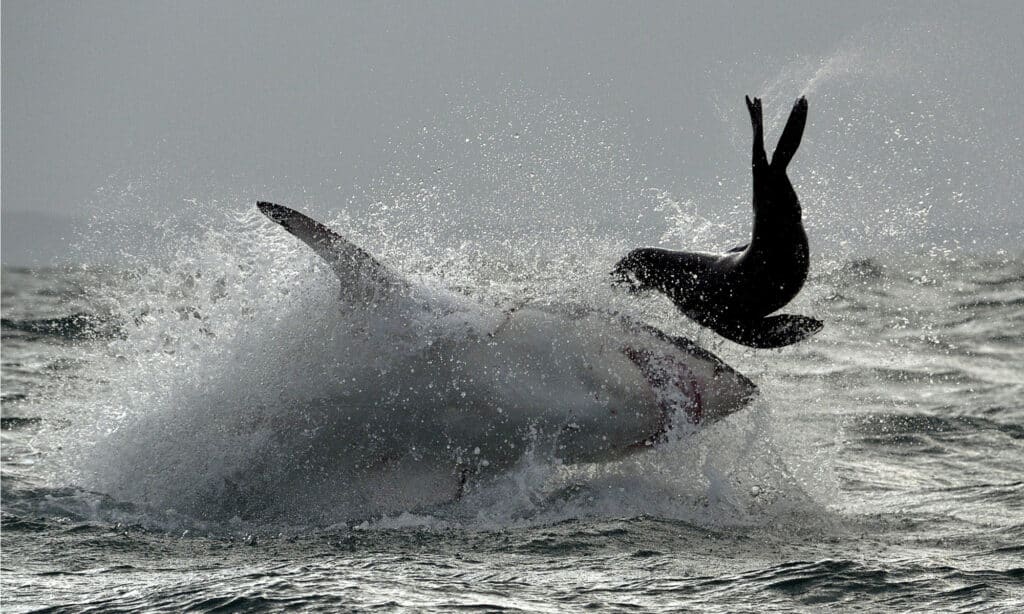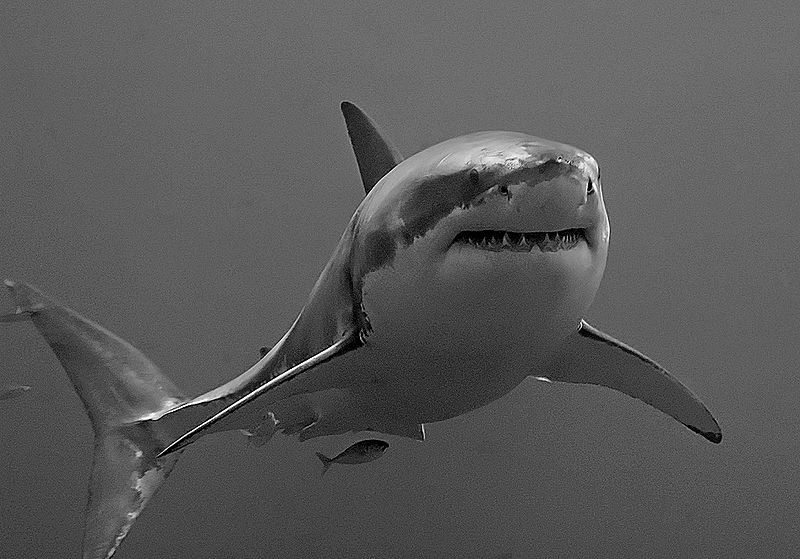California is home to Hollywood, Redwood National Park, Disneyland, and great white sharks. Great white sharks in California rarely bite humans, though they’re present in the waters of all of California’s coastal counties. Great whites (Carcharodon carcharias) are responsible for at least 180 of the 203 shark attacks recorded in California since 1950. As more people venture into the water, interactions with sharks increase.
That’s why it’s so important to understand the role of great white sharks in California. Here, we’ll learn just what makes a great white different from other sharks. Then, we’ll go over the various places in California where you’re most likely to encounter one of these incredible apex predators. We’ll explain why more great whites have been spotted in California waters in recent years and why they’re so important. Finally, we’ll go over a few of the key steps to staying safe when you go into the water with sharks.
Great White Sharks Explained

Fearless hunters of the sea, great whites are named for the white color of their bellies.
©Sergey Uryadnikov/Shutterstock.com
Great white sharks are large, cold-blooded, predatory fish. They grow up to 26 feet long, though most top out around 13-14 feet long. Adults swim in the open oceans while juveniles hang close to the safer waters of the coast. Great whites are among the largest of all sharks; they primarily hunt large fish, sea turtles, seals, sea lions, stingrays, and other sharks. Thanks to popular media, many people have a healthy fear of sharks. However, your chances of being bitten by a great white shark in California are extremely slim.
Are there Great White Sharks in California?
Great white sharks swim in all of California’s coastal waters. Young great whites hang out close to shore, and they seem to migrate with the seasons. You’re most likely to encounter a great white in California during the summer months when water temperatures are at their hottest. Generally, large adults hunt in deep ocean waters. Most of the great whites spotted near beaches are juveniles, who generally shy away from humans.
How Many Great White Sharks are there in California?
Great white sharks in California aren’t that easy to count. First, they live in the water, which makes reliable counts difficult. And second, they don’t stick in one place year-round. But, recent studies seem to indicate that great white populations are on the rebound. For example, in northern California, there are as many as 300 juvenile great whites circling coastal waters. But, the number of great whites in the water fluctuates.
Where are the Most Great White Shark Infested Waters in California?
There are great white sharks in all of California’s coastal waters. However, some places seem to have higher shark populations than others. The areas of Bird Rock (Marin county), Tomales Point (Marin county), Ano Nuevo Island (San Mateo county), and the Farallon Islands are the most shark-infested waters in California.
How to Stay Safe in the Water
Believe it or not, great white sharks aren’t actually cruising the water looking for human victims. Scientists believe that most unprovoked shark attacks are cases of mistaken identity. That is, the shark mistakes a human for something a little tastier, like a seal.
In order to minimize your risk of a shark attack, always go into the water with a buddy. Avoid unnecessary splashing, and never enter the water with a bleeding wound. Avoid bright colors or high contrast patterns, as these attract sharks’ attention. Pay attention to shark warnings; if beaches post shark advisories, don’t go in the water. Finally, stay away from areas with fishermen, schools of fish, or populations of seals or sea lions.
Why Great White Sharks are Important?

Conserving sharks is vital to maintaining healthy marine ecosystems around the world.
©Pterantula (Terry Goss), CC BY-SA 3.0, via Wikimedia Commons – License
Great white sharks are a keystone species. That means that their presence in the environment is vital to the continued health and balance of the entire food web. Sharks help maintain the delicate balance of the marine ecosystem, which keeps the entire ocean healthy. Today, shark populations have declined by as much as 90% of their previous numbers due to the shark fin soup industry, overfishing, oceanic acidification, climate change, and habitat loss. Our oceans depend on sharks, and we depend on our oceans. So, it’s important to act to conserve great whites, and all sharks, now.
The photo featured at the top of this post is © wildestanimal/Shutterstock.com
Thank you for reading! Have some feedback for us? Contact the AZ Animals editorial team.






